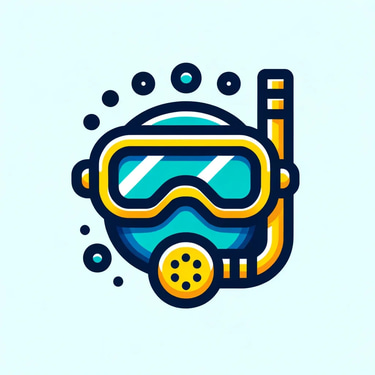Most Common Dive Accidents and How to Avoid Them
Learn about the most common scuba diving accidents — from decompression sickness to equipment failure — and how to avoid them with proper planning and dive safety tips.
SAFETY WHILE DIVING


Most Common Dive Accidents and How to Avoid Them
Scuba diving is a safe and thrilling activity when done properly, but like any adventure sport, it comes with risks. Understanding the most common dive accidents — and how to prevent them — is essential for every diver’s safety. This guide outlines the top issues divers face and how to avoid them with smart preparation and safe diving habits.
1. Decompression Sickness (DCS)
What it is: Also known as "the bends," DCS happens when a diver ascends too quickly, causing nitrogen bubbles to form in the body.
Prevention: Always ascend slowly, perform a 3-minute safety stop at 15 feet, and never exceed your no-decompression limits (NDL). Using a dive computer helps track nitrogen absorption accurately.
2. Barotrauma
What it is: Barotrauma occurs when pressure changes cause damage to air spaces in the body, especially the ears and lungs.
Prevention: Equalize early and often during descent, never dive with a cold or congestion, and never hold your breath while ascending.
3. Nitrogen Narcosis
What it is: A condition that impairs judgment and motor skills at depths typically beyond 100 feet.
Prevention: Limit deep dives if you're inexperienced. Stay within your training limits and dive with a buddy. Avoid alcohol or medications that may increase susceptibility.
4. Out-of-Air Emergencies
What it is: Running out of air at depth can lead to panic and rapid ascent — both very dangerous.
Prevention: Check your pressure gauge frequently. Begin your ascent with at least 500 PSI (50 bar) remaining. Practice air-sharing drills regularly with your dive buddy.
5. Equipment Malfunction
What it is: Failures like leaking hoses, free-flowing regulators, or jammed inflators can quickly escalate underwater.
Prevention: Perform a thorough pre-dive safety check (BWRAF), keep your gear serviced annually, and carry a backup air source when possible.
6. Marine Life Injuries
What it is: Most injuries happen not from aggression, but from touching or startling marine life like stingrays, lionfish, or fire coral.
Prevention: Follow the “look but don’t touch” rule. Maintain good buoyancy control to avoid accidental contact.
Conclusion
Most dive accidents are entirely preventable with proper training, attention to detail, and respect for diving procedures. By staying alert, diving within your limits, and planning each dive carefully, you greatly reduce your risk and increase your enjoyment of the underwater world.
Works Cited
Divers Alert Network (DAN). (2023). Common diving injuries and prevention. https://dan.org/health-medicine/health-resources/dive-injuries/
PADI. (2023). How to avoid common diving mistakes. https://www.padi.com/articles/how-to-avoid-diving-accidents
Scuba Diving Magazine. (2024). Top dive safety tips to avoid accidents. https://www.scubadiving.com
